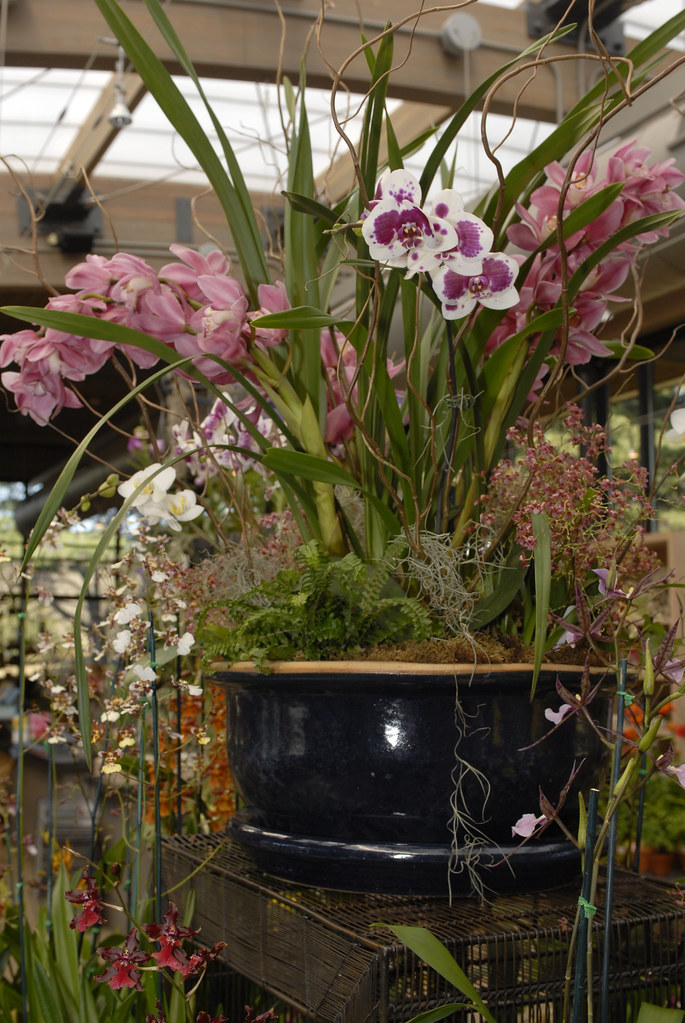Tip of the Week — 2/23/09
Posted in Exhibitions, Gardening Tips, The Orchid Show on February 23 2009, by Sonia Uyterhoeven
Everything You Need to Care for Orchids Is in Cupboard
 Sonia Uyterhoeven is Gardener for Public Education at The New York Botanical Garden.
Sonia Uyterhoeven is Gardener for Public Education at The New York Botanical Garden.
 The best way to avoid or eliminate pest and disease problems when growing orchids in your home is to follow good cultural practices. Correct watering routines, consistent fertilizing, a good growing medium, proper light requirements, and adequate humidity levels are all essential to getting your exotic friends to thrive.
The best way to avoid or eliminate pest and disease problems when growing orchids in your home is to follow good cultural practices. Correct watering routines, consistent fertilizing, a good growing medium, proper light requirements, and adequate humidity levels are all essential to getting your exotic friends to thrive.
Sometimes, all that we do to take care of our orchids just isn’t enough. Let’s take a look as some user-friendly products that we have on hand to treat an ailing orchid. The first on the list is a grapefruit. If you notice that something is munching holes in the leaves of your orchid, but you just can’t find the culprit, then it’s probably a slug.
They nestle into the nice loose and moist pieces of your fir bark potting mix and wait until dark before they strike. These nocturnal creatures can do quite a bit of damage, so leave an overturned grapefruit or citrus rind in your pot. The slugs will crawl up into the damp cavity and you can then toss it out (slug and grapefruit rind) in the morning.
For other pest problems such as aphids, mealybugs, and scale try reaching into a household cupboard and pulling out the rubbing alcohol or the Murphy’s Oil Soap®. Dilute the Murphy’s Oil Soap® by adding 2–3 tablespoons to a quart of water. For scale, take a soft toothbrush or a cotton swab soaked with rubbing alcohol and rub off the scale.
Any new treatment should be tried first on one leaf or an isolated part of the plant to see how it is going to respond. Spray early in the morning or late in the day. Some sprays dry off quickly in the middle of the day and lose their potency and other times the combination of the spray and the intensity of the midday sun can burn the leaves. You will miss some insects the first time you spray, so repeat the treatment once a week for several weeks.
 If your orchids have black or brown spots that start to grow and look watery or mushy, then there is a good chance that it has a bacterial or fungal problem. Stick your hand back into the cupboard and grab the cinnamon—nature’s favorite natural fungicide. If possible, cut off the infected portion of leaf and sprinkle cinnamon over the area. If that is not available try Neosporin® applied with a cotton swab.
If your orchids have black or brown spots that start to grow and look watery or mushy, then there is a good chance that it has a bacterial or fungal problem. Stick your hand back into the cupboard and grab the cinnamon—nature’s favorite natural fungicide. If possible, cut off the infected portion of leaf and sprinkle cinnamon over the area. If that is not available try Neosporin® applied with a cotton swab.


Love the cinnamon tip for fungus! Works great!
http://www.greenspacenyc.com